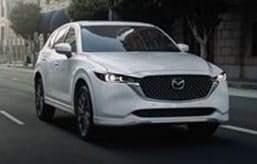- Nissan is working on paint that'll cut temps by reflecting heat.
- The special paint works by bouncing back heat, dropping temperatures inside the car by up to 9 degrees Fahrenheit.
- Nissan also hopes to offer a full array of colors should it see production.
Nissan's Cool Temperature-Controlled Paint Will Help You Use Less Fuel
Nissan has cool paint that'll help do just that, dropping in-car temps and saving gas
Nissan is currently testing a new type of vehicle paint that will result in a lower cabin temperature, making vehicles more efficient and pleasant to ride in during the hotter months. The paint uses “metamaterial, synthetic composite materials with structures that exhibit properties not usually found in nature.” A 12-month trial of the new paint began in November last year, and Nissan says it has already seen impressive results.
Parked next to a control vehicle and with both cars in direct sunlight, the car with Nissan’s special paint showed a 21.6-degree Fahrenheit reduction in exterior surface temperature, and more importantly, a 9-degree drop in interior temperatures. Effectively, it means using your car’s air conditioner less often, saving fuel or battery charge as the case may be. The metamaterial inside the paint features two light-reactive particles that lend the paint its heat-dissipating property. The first reflects some of the near-infrared rays found in sunlight that produce heat, and the second creates electromagnetic waves that counteract the sun’s rays. This redirects energy away from the vehicle. In layperson’s terms, the paint’s special molecular structure reduces the transfer of heat onto the car’s metal body and into the cabin.
Although it’s just in the testing phase, Susumu Miura, senior manager at the Nissan Research Center, has high hopes for the paint: "My dream is to create cooler cars without consuming energy. This is especially important in the EV era, where the load from running air conditioning in summer can have a sizable impact on the state of charge," he said. Paint like this isn’t a totally new idea, and it can be used in construction, though that paint does not have a clear coat and can leave a chalky residue behind when touched. According to Miura, the current iteration of the automotive paint is around six times thicker than normal paint and has shown resistance to salt, chipping, peeling, scratches and more. The team also hopes to offer colors beyond white.
Edmunds says
Being able to reduce cabin air temperatures without expending any energy is a win-win, and we’re hoping this cool paint tech can make its way to production Nissans soon.






 by
by  edited by
edited by